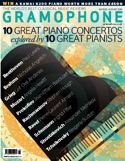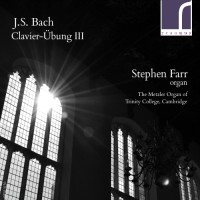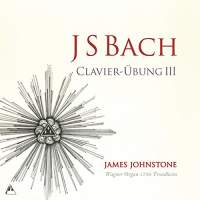Texte paru dans: / Appeared in:
|
|||||||
|
Outil de traduction (Très approximatif) |
|||||||
|
Reviewer:
Jonathan
Freeman‑Attwood
Bookended by the great Prelude and Fugue in E flat, the third part of the Clavier‑Übung appeared in 1739 and still remains one of those Bach repositories admired largely by aficionados of the organ or those intrigued by its penetrating excursions into hymnody and, especially, the catechism in the so-called ‘German organ Mass’. While Bach’s previous published volumes consist of mature harpsichord works (including the six Partitas), as does the fourth with the Goldberg Variations, Clavier‑Übung III is arguably the most resolutely resourceful expression of late-style Bach to be found.
Here we have two fine English players, both inaugurating their Bach recording journeys with this pinnacle of the oeuvre in remarkably complementary ways. Indeed, the idea of an unfolding tapestry is what defines the best performances from Masaaki Suzuki, Leo van Doeselaar and Kay Johannsen, to name three. Each of them alights on Bach’s calculated exhibition of where the chiseled treatment of old modal hymns and galant sensibility offer an ecstatic and magnetic pull into the heart of the chorales.
Stephen Farr takes a refreshingly direct approach, but it’s never matter-of-fact. His opening ‘ouverture’ may initially seem short of sparks but his exquisite matching of registrations on the fine Metzler of Trinity Cambridge and wisely judged tempi reveal a compelling imagination and a hugely impressive musical armoury. This ranges from the embedded poetics of the soft-hue chorale preludes for manuals to the coruscatingly powerful Kyrie, Gott Heiliger Geist – almost unbearable as the chromatic close reveals the human’s deepest cry for mercy – and the Gothic majesty of Aus tiefer Not with its grindingly severe double pedal. Farr decides against the kind of monumentality one usually hears; its granite truth is still effectively implicit. Of the more enigmatic pieces, Farr negotiates the canonic wonders of Dies sind die heil’gen zehn Gebot with tantalising allure and the Lombardic mysteries of Vater unser – a place where critics of Bach’s antiquated complexity would have been checked by the calculatingly modern gestures.
James Johnstone thrusts us almost immediately from the opening Prelude into a bright world of urgent theatricality and rhythmic momentum. The immediacy of the Joachim Wagner organ in Trondheim in Norway (begun in the same year as Bach published this set) is balanced by Johnstone’s fine ear for juxtaposing ‘period’ colour with ‘à la mode’ Baroque rhetoric and timing; this is not just fine organ-playing but top-drawer keyboard-playing from a musician who, when in the loft, thinks as harpsichordist, obbligatist and continuo player all at once.
If the melodic threads are less expressively shaped here than with Farr’s easy lyricism – as you can hear in the superb trio on Allein Gott with its inverted double counterpoint – then Johnstone ingeniously imparts the sense that he’s accompanying himself with clear and deliberately delineated roles. Equally, his grip on the architecture of the large-voiced pieces never fails to offer the listener a probing intellectual template, fortified by a commanding technical presence.
Johnstone
brings regular intensity (the little Fughetta super Wir glauben is an
almost histrionic example) and an unusual blend of containment and stylistic
flair to this extraordinary compendium of Bachian craft, not to mention
effortless class in the rolling, concerto-like Christ, unser Herr, zum Jordan
kam. Farr is no less profoundly engaged. His instincts for beauty and
projecting the emotional ‘core’ without affectation are among the many virtues
here. I wouldn’t be without either in appreciating Bach’s most elaborate
publishing venture and wellspring of organ-playing invention. |
|||||||
|
Consultez d'autres mois / Browse other months
|
|||||||
|
|
|
||||||
|
Cliquez l'un ou l'autre
bouton pour découvrir bien d'autres critiques de CD |
|||||||





